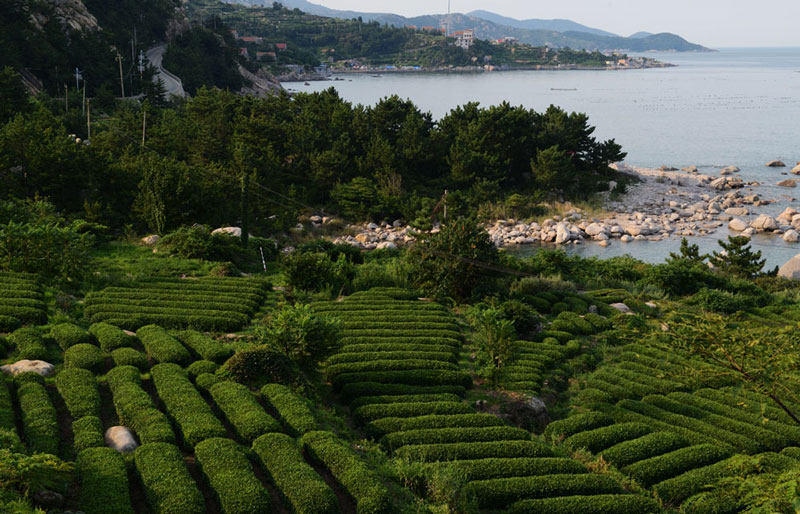
Laoshan (Mount Lao) green tea, hand picked and nurtured by local farmers, is considered one of the best teas in China. Laoshan’s majestic seaside mountains help create this ideal ecosystem. Laoshan’s soil composition and environmental conditions give this tea its unique characteristics. With its ‘fung shui’ features, the ‘yang’ of its granite peaks and the ‘yin’ of the yellow sea bellow, Laoshan is not only an ideal location for practicing Daoism. This dichotomy has not only produced famous tea but also a place in which to enjoy its delicate fragrance and healing powers.
How to Brew Laoshan Green Tea
The Qingdao Institute of Marine Geology has researched the extraction characteristics of nine mineral elements in Qingdao Laoshan green tea. The effects of factors like temperature, time, and extracting methods on the extraction have been investigated. The results show that the extracted amount of different elements vary with temperature and time, but most of elements can be extracted maximally at 80℃ ~ 90℃, with the optimum time of 30 minutes. The second extraction of mineral elements can still reach 50% of the first extraction; indicting that Laoshan green tea is abundant in mineral nutrition. [1]
Green tea (绿茶: lǜchá) is a “true” tea (i.e., Camellia sinensis) that has undergone minimal oxidation during processing. Green tea is popular in mainland China, Taiwan, Hong Kong, Japan, Korea, and the Middle East.
Benefits of Laoshan Green Tea
In May 2006, researchers at Yale University School of Medicine looked at more than 100 studies on the health benefits of green tea. They pointed to what they called an “Asian paradox,” which refers to lower rates of heart disease and cancer in Asia despite high rates of cigarette smoking. They theorized that the 1.2 liters of green tea that is consumed by many Asians each day provides high levels of polyphenols and other antioxidants. These compounds may work in several ways to improve cardiovascular health, including preventing blood platelets from sticking together and improving cholesterol levels. [2]
A German study found that an extract of green tea and hot water, applied externally to the skin for 10 minutes, three times a day for 16 to 20 days could help people with skin damaged from radiation therapy. A study in Japan indicated that people ages 40-79 who drank five or more cups a day were 16 percent less likely to die within the 11-year study period, compared to people who drank only one cup a day. [3]
Green tea has also been claimed to reduce stress and produce alpha waves. This is thought to be due to high antioxidant levels and the presence of l-theanine, which is a glutamate analog present in green tea that can cross the blood-brain barrier and reduce glutamate excitotoxicity during stress and ischemia.
10 Health Benefits of Laoshan Green Tea
Many studies have investigated this link between the consumption of green tea and a lower incidence of a range of cancers in populations, with mixed results. Green tea enthusiasts believe it to be useful for:
- Improved Cognition.
- Stopping certain neurodegenerative diseases such as Alzheimer’s & Parkinson’s.
- Preventing/treating cancer.
- Treating arthritis.
- Treating multiple sclerosis.
- Treating impaired immune function.
- Preventing tooth decay.
- Preventing the degradation of cell membranes by neutralizing the spread of free radicals.
- Increasing fat oxidation (helps the body use fat as an energy source) and raises metabolism.
- Lowering LDL cholesterol (in high doses in lab tests).
[1] www.tea-research.com
[2] www.yale.edu
[3] www.cbsnews.com